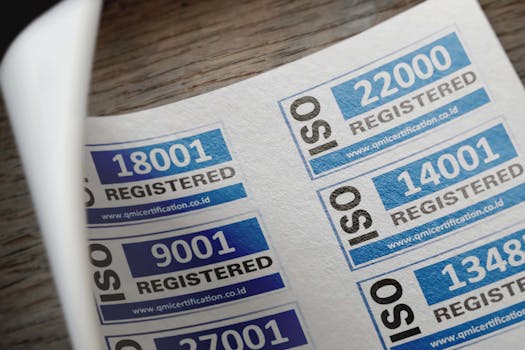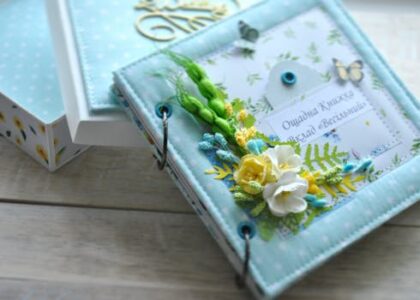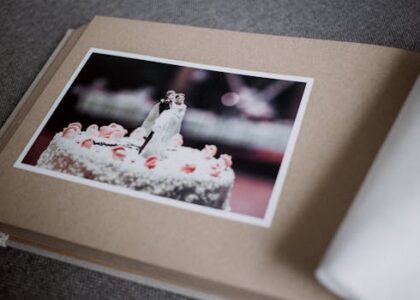As an Amazon Services LLC Associates Program participant, we earn advertising fees by linking to Amazon, at no extra cost to you.
Understanding Paper Choices for Wedding Prints
Paper choice can make or break a wedding album. It’s not just about how it looks; it’s about how it feels and lasts. Different papers have unique characteristics. For example, luster paper brings out colors beautifully while maintaining detail. It’s shiny but not overly reflective. This is key for vibrant images.
Then there’s fine art paper, which gives a textured finish. It adds depth, especially to black-and-white photos. This choice can elevate the emotional tone of your album. Cotton rag paper is also a fantastic option if you want something that feels luxurious.
Many photographers overlook the importance of archival-quality materials. These papers resist fading and discoloration over time. According to Zno, “Selecting the right album company is crucial for ensuring high-quality results.” That’s why I always recommend doing your homework.
Now, let’s talk about eco-friendly options. Some folks think traditional paper is the only way to go. I think using recycled or sustainably sourced papers is a great alternative. It’s a win-win for quality and the environment. Clients love knowing their albums are eco-conscious.
Incorporating these choices can be a game changer for your albums. It’s not just about aesthetics; it’s about creating something that lasts. Consider the emotional weight of these decisions. The right paper can tell a story.
[Recommended Print Resolutions for Various Sizes]
Here’s a quick rundown on the recommended print resolutions to keep your wedding albums looking sharp and stunning.
- Aim for 300 DPI for standard prints. This ensures clarity and detail in every shot.
- For larger prints, go for at least 400 DPI. This helps maintain quality when enlarging images.
- Adjust resolution based on print size. Smaller prints can work with lower DPI, but clarity is key.
- Communicate with clients about resolution. It sets the right expectations for print quality.
- Utilize digital platforms for automatic adjustments. They can simplify the process and maintain quality.
New Trends in Photo Printing Standards
Many photographers think high-quality prints only come from traditional methods. I believe the future lies in sustainable practices. Eco-friendly printing options are gaining traction, and they look amazing!
Using recycled papers and vegetable-based inks not only helps the planet but also gives prints a unique character. These materials can produce stunning results that rival conventional methods.
Most people assume that archival-quality prints must be expensive. However, I find that many affordable options exist that still meet high standards. Just look for certifications that guarantee longevity.
For instance, brands like Zno emphasize customization and quality. They offer choices that can cater to every photographer’s vision. According to the Zno Blog, “Selecting the right album company is crucial for ensuring high-quality results.”
Another trend is the rise of digital printing technology, which allows for precise color matching and superior detail. This tech is a game-changer for photographers aiming to push creative boundaries.
Most people think traditional paper types are the only way to go. I think experimenting with different materials can elevate the final product. Textured papers can add depth and interest to photos, making them stand out.
Lastly, let’s talk about personalization. More clients want unique, tailored experiences. Offering custom designs and finishes can set your work apart in a crowded market. It’s not just about the photo; it’s about the story behind it.
Types of Paper and Their Impact on Photos
Choosing the right paper can transform wedding photos from ordinary to extraordinary. Here’s a quick rundown of how different paper types impact the final print quality.
- . Glossy paper boosts color vibrancy but reflects light, which can be distracting.
- . Matte paper offers a softer finish and is less prone to fingerprints, making it great for candid shots.
- . Luster paper combines the best of both worlds, providing rich colors and a subtle sheen.
- . Fine art paper adds a textured feel, enhancing black-and-white images and giving a luxurious touch.
- . Archival-quality paper ensures longevity, resisting fading and discoloration over time.
- . Eco-friendly papers are gaining popularity, appealing to environmentally conscious couples.
- . Choosing the right paper can reflect the emotional tone of the wedding, enhancing the storytelling aspect.
- . Experimenting with different papers can lead to unique artistic expressions in your wedding album.
Artistic Alternatives to Traditional Printing
Most people think high-resolution prints are the only way to achieve stunning wedding albums. I believe artistic techniques can often outshine mere resolution. Sometimes, it’s about capturing the moment, not just the pixels.
Take candid shots, for instance. They might not always meet the 300 DPI standard, but their emotional impact is priceless. “You don’t have to have your photos printed out someplace fancy,” says Jessica Ellen May, highlighting the value of loose prints over formal ones.
Some photographers prefer to collaborate with professional labs. This can elevate the quality of prints beyond what most can achieve at home. But I think we should also embrace the DIY spirit. With the right knowledge, you can create beautiful prints yourself.
What about eco-friendly materials? Many believe traditional photo papers are the best choice. But using recycled or sustainably sourced papers can be just as effective. This not only preserves print quality but also appeals to eco-conscious couples.
Let’s talk about color calibration. While many rely on standard settings, I advocate for personalized adjustments. This ensures that the colors in prints reflect the true essence of the wedding day.
Lastly, the emotional tone of the album matters. A textured finish can add depth to black-and-white images. It’s about choosing the right paper that aligns with the story you want to tell.
As we navigate the world of wedding photography, let’s not forget the power of creativity. Traditional methods have their place, but exploring alternatives can lead to truly unique and meaningful albums.
Importance of High-Quality Prints
High-quality prints are non-negotiable for wedding albums. They preserve those precious moments beautifully.
- Quality prints capture the emotion of the day. They allow you to relive the moment every time you open the album.
- 300 DPI is the gold standard for print resolution. This ensures that every detail shines through, from lace to smiles.
- Paper choice matters immensely. Glossy finishes enhance colors, while matte options provide a soft touch.
- Collaboration with professional labs can elevate your prints. Their expertise can make a noticeable difference in color accuracy and finish.
- Artistic techniques can complement traditional printing. Sometimes, a candid shot can be just as impactful, even if it’s not the highest resolution.
The Role of Print Quality in Wedding Albums
Print quality is everything in wedding albums. It’s not just about photos; it’s about memories. A stunning print can evoke emotions like nothing else.
Many photographers suggest using a print resolution of 300 DPI. This ensures that every detail is sharp and clear. When you hold a wedding album, you want to feel the magic of that day.
Choosing the right paper can elevate your prints. Glossy paper enhances colors but can reflect light. Matte paper gives a softer look, which can be perfect for intimate moments.
Most people think that in-house printing is the best option. But I believe in outsourcing to professional labs. They have expertise in color matching and archival techniques. This often yields better results than any DIY approach.
According to PrintSafari, “Professional prints require an experienced eye and an expert hand.” That’s why I always recommend collaborating with someone who knows their stuff. It’s worth it!
It’s not just about technical aspects. The emotional tone of the album matters too. Selecting paper that aligns with the couple’s style can make a huge difference.
Many photographers overlook the impact of digital alterations on print quality. Adjusting colors and sharpness can be tricky. If not done right, these changes can ruin the final print.
Understanding print quality standards is key to creating unforgettable wedding albums. It’s about more than just pretty pictures; it’s about preserving a moment in time.
For insights on professional printing, check out PrintSafari. They have a wealth of information to help you get it right!
Feb 13, 2023 … … print quality than the cheap drugstore photo books. But they're … I'd get the photos printed at a photography place and mount them myself.
Any wedding photo albums that aren’t photobooks in 2023? : r …
Mar 31, 2022 … Price: · Cost Per Page: $30 minimum, usually discounted · Overall Book Quality: A+ · Overall ease of use of software: D · Photo Upload: · Quality of …
Sep 12, 2024 … The same picture looks so much more vibrant in 6 color printing, and the standard ink option looks washed out in comparison. The 6 color is more …
Jan 24, 2011 … But there are times that I have projects that I want photo print quality books, instead of standard press print. … sites like Asuka Books.
prints – What do you recommend for a high quality photo book service?
Essential Factors Affecting Print Quality
Print quality is everything in wedding albums. It’s not just about pretty pictures; it’s about preserving memories. You want those images to pop and evoke emotion every time you flip through the pages.
First off, resolution matters. You need at least 300 DPI for prints to look sharp. Anything less can make your stunning shots look pixelated and dull. Trust me, no one wants that on their big day!
Then there’s the paper choice. The type of paper can totally change the feel of your album. Glossy paper enhances colors but can be a nightmare with reflections. Matte paper, on the other hand, gives a soft touch but might mute some hues.
Some folks think they can just print at home and call it a day. But I think that’s a gamble. Professional labs offer expertise in color matching and archival techniques that can elevate your album to an art piece. As noted by PrintSafari, “Professional prints require an experienced eye and an expert hand.”
And let’s not forget about the emotional tone of your photos. Choosing paper that complements the style of your images is key. For instance, textured papers can add depth to black-and-white shots, making them feel more timeless.
Lastly, keep an eye on trends. More photographers are turning to eco-friendly printing options. It’s a win-win: you get high-quality prints and help the planet. Why not make your wedding album as memorable for the Earth as it is for you?
In conclusion, print quality standards are not just technicalities; they’re integral to how your wedding memories are preserved. So, invest the time and effort into understanding these factors. Your future self will thank you!
As an Amazon Services LLC Associates Program participant, we earn advertising fees by linking to Amazon, at no extra cost to you.
What is the best resolution for wedding album prints?
Many photographers swear by 300 DPI as the golden standard for wedding album prints. This resolution makes sure every detail pops, from lace patterns to radiant smiles. Some say higher resolutions, like 400 DPI, are necessary for larger prints. But I think that’s overkill for most wedding photos.
It’s all about the balance. Sure, higher DPI can enhance detail, but if the image isn’t composed well, it won’t matter. In fact, some photographers argue that artistic techniques can make up for lower resolutions. I completely agree!
For instance, capturing candid moments adds emotional depth, even if the resolution isn’t perfect. So, while 300 DPI is a solid rule of thumb, don’t stress if you can’t hit that mark every time. Quality prints can still shine with the right approach!
According to Optimalprint, “Choosing the correct aspect ratio plays a vital role in creating impactful images.” So, it’s not just about DPI!
How does paper type affect print quality?
Paper type is a game changer in print quality. Different papers yield different results. For instance, glossy paper makes colors pop, but it can reflect light, which might annoy viewers.
On the flip side, matte paper offers a soft finish and resists fingerprints, but colors might not be as bright. Choosing the right paper is about balancing aesthetics and durability.
Most people think that any paper will do, but I believe that paper choice can enhance the emotional tone of the images. Cotton rag paper can bring out the depth in black-and-white photos, making them feel timeless.
According to Zno, “Selecting the right album company is crucial for ensuring high-quality results.” So, don’t skimp on paper choice!
Some photographers are even opting for eco-friendly materials. This not only maintains print quality but also supports sustainability. It’s a win-win!
Can I achieve good print quality at home?
Many believe home printing can yield great results. I think otherwise. Home printers often struggle with color accuracy and paper quality.
Sure, you can print photos, but achieving professional-level quality is tough. Most home printers just can’t match the standards of dedicated printing labs.
Professional labs use specialized equipment and high-quality materials. This makes a huge difference in print longevity and vibrancy.
As PrintSafari states, “Professional prints require an experienced eye and an expert hand.”
While home printing offers convenience, it lacks the finesse of lab prints. If you want stunning wedding albums, consider outsourcing to experts.
But hey, if you’re feeling adventurous, experiment with different papers and settings. Just don’t expect the same results as a professional.
Some photographers even advocate for eco-friendly printing options, using recycled materials. This can be a unique touch for eco-conscious couples.
Ultimately, it’s about what matters to you. Choose quality or convenience based on your priorities.
What are archival-quality materials and why are they important?
Archival-quality materials are designed to last. They resist fading and deterioration over time. This is crucial for preserving wedding memories.
Many believe that any paper will do, but I think using archival materials is a game changer. According to PrintSafari, ‘Professional prints require an experienced eye and an expert hand.’ This means that the right materials can significantly enhance print quality.
Using high-quality, acid-free papers ensures that prints won’t yellow or degrade. It’s that simple! Some photographers might suggest cheaper options, but I believe investing in archival materials pays off in the long run.
Moreover, the tactile experience of these materials adds a unique touch. It makes flipping through an album feel special. As Jessica Ellen May puts it, ‘Loose prints are the easiest way to go and are relatively cheap,’ but they lack the depth of archival prints.
Incorporating these materials can elevate the entire album. It’s about creating a lasting legacy, not just pretty pictures.
How do I choose the right printing lab for my photos?
Choosing the right printing lab is key to achieving stunning wedding albums. I believe many photographers underestimate this aspect. Most think any lab will do, but I think that’s a mistake.
Look for labs that specialize in wedding photography. They understand the nuances of color matching and archival techniques. As noted by PrintSafari, “Professional prints require an experienced eye and an expert hand.” This expertise can significantly elevate the quality of your prints.
Don’t overlook customization options. A good lab offers various finishes and paper types, allowing you to align the output with your artistic vision. According to Jessica Ellen May, you don’t need fancy prints, but quality matters.
Consider the lab’s reputation. Read reviews and ask for samples. This will help you gauge their quality and service. Remember, the right lab can turn your photos into cherished keepsakes.
Some photographers believe in DIY printing, but I think that can lead to disappointment. Professional labs offer consistency and superior results that home setups often can’t match. So, invest in the right lab for unforgettable wedding albums.
High-quality prints are a must for wedding albums. 300 DPI resolution is your go-to for sharp images. It captures every detail, from lace patterns to twinkling eyes.
Many photographers stick to this standard, but I believe in pushing boundaries. Higher resolutions, like 400 DPI for larger prints, can make a real difference. It’s all about ensuring your memories shine.
Some folks might say that you can compromise on resolution. But I think that’s a mistake. Every pixel counts when preserving those special moments.
For more insights, check out the Optimalprint blog. They emphasize how crucial the right pixel density is for impactful images.
High-quality prints are non-negotiable for wedding albums. They capture every detail and emotion, making memories last. I believe every couple deserves stunning prints that reflect their special day.
Many photographers stick to conventional methods, but I think working with specialized printing labs can elevate the final product. It’s not just about resolution; it’s about the artistry involved in the process.
Choosing the right paper can transform an album. Glossy or matte can change the mood entirely. Remember, it’s about what resonates with the couple’s vision.
As PrintSafari states, “Professional prints require an experienced eye and an expert hand.” This rings true for anyone serious about preserving their wedding memories.
Don’t forget about sustainability. Eco-friendly options are not just trendy; they show care for our planet. It’s that simple!
Explore more about the importance of print quality in wedding albums with PrintSafari and Jessica Ellen May.
Many photographers think they can handle printing themselves. But I believe collaborating with professional labs is a game changer. These labs have the expertise in color matching and archival techniques that can elevate your wedding albums significantly.
It’s not just about quality; it’s about options. Professional labs often provide unique finishes and customizations that bring your vision to life.
As PrintSafari states, “Professional prints require an experienced eye and an expert hand.” Trusting the pros means your memories get the care they deserve.
And let’s not forget about sustainability. Some labs offer eco-friendly printing options, which can be a fantastic selling point for eco-conscious couples.
Most photographers think glossy paper is the best choice. I believe that choosing the right paper can elevate your prints dramatically. For instance, luster paper offers vibrancy while cotton rag adds depth.
Many overlook the impact of paper on longevity. Archival-quality materials resist fading, preserving those precious wedding memories for years. As Alan Ranger puts it, “The choice of paper is largely a personal one, and it does depend on what paper suits a particular image.” See more insights here.
While most prefer traditional papers, eco-friendly options are gaining traction. Recycled papers can maintain quality and appeal to eco-conscious couples. It’s about balancing aesthetics with sustainability.
Most photographers think high resolution is the only way to go. But I believe that artistic techniques can elevate prints even without top-notch specs. A well-composed shot can shine, even if it’s not at 300 DPI.
It’s all about the moment. Capturing raw emotion can outweigh the need for perfect resolution. I’ve seen stunning albums where candid shots tell the story better than posed ones.
Additionally, collaborating with a professional lab can bring out the best in your work. They understand how to balance art with technical quality. According to PrintSafari, “Professional prints require an experienced eye and an expert hand” source.

I’m Marta, a passionate wedding specialist with over 25 years of experience in the wedding and party planning business.









